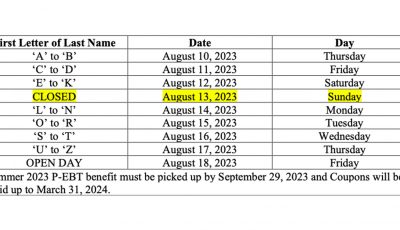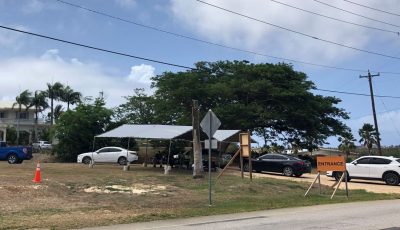NAP to issue disaster food stamps
NAP clients may get additional benefit from supplemental program
The Department of Cultural and Community Affairs’ Nutritional Assistance Program will be giving out food stamps to eligible families under its Disaster Program starting this week.
According to NAP director Walter Macaranas, if weather permits, they will start on Aug. 20, Thursday, and it will run for seven days until Aug. 26.
“We will open on Saturday and Sunday to help those who are working,” Macaranas said.
NAP will be accepting applications, determine eligibility, and also give the benefit on the same day from 8am to 5pm in one location only—the NAP Office in As Lito.
Macaranas said they will still process pending applications beyond 5pm but eligible residents will get their benefit the following day.
Disaster Program
Under NAP’s Disaster Program, which is intended for non-NAP recipients, all residents of Saipan regardless of citizenship or immigration status can apply, although eligibility will be limited in terms of income and resources of the household.
“Anybody can apply but not everybody is eligible because there are criteria to follow,” Macaranas said. “To be eligible they have to go under an income and resources test.”
NAP would be giving the maximum benefit for the month of August to those who are eligible.
For example, a household with three members should have a monthly take home pay and resources such as bank accounts not exceeding $805 to receive the maximum allotment of $404.
NAP also set a resources limit of $3,000 for households who have at least one member aged 55 and older, and $2,000 for all other households. Resources include checking/savings account, TCDs, savings bonds, and cash on hand.
Documents needed for the application are proof of income and resources such as check stubs and bank statements or receipts; photo ID for head of household, spouse or authorized representative such as driver’s license, passport, Northern Marianas Descent Card, Mayor’s and Military IDs; and proof of residency such as CUC, telephone, cable, rental billings, vehicle registration, voter’s ID, school records such as unofficial transcripts, or tax returns.
Disaster-related expense
“If the client feels that they are unable to meet this gross test, we can have them disclose their disaster-related expenses. So when we do that, we would minus their expenses with their gross income,” Macaranas said.
If receipts are not available, especially with regards to the expenses that are yet to be incurred by Aug. 30, they may be declared in an affidavit and applicants will sign under the penalty of perjury, he said.
For disaster-related expenses, households should bring their receipts pertaining to the expenses that was incurred and/or expected to be incurred from Aug. 1 to 30, 2015. Examples of these are food, tarp, rope, boards, water, gasoline, diesel, candles, flashlights, batteries, butane gas, buckets, cleaning supplies, clothing, shoes, and other related disaster expenses.
“It’s not what you lost, but what you incurred because of the disaster,” Macaranas said.
Expenses can also include dependent care due to disaster, funeral/medical expenses due to the disaster, moving and storage costs due to disaster, temporary shelter expenses, cost to protect property during disaster, cost to repair or replace items for home or self-employment property, and loss of income.
Supplemental Program
The Supplemental Program, on the other hand, is intended for ongoing NAP recipients.
“A household who has not received the maximum benefit, we would give them the difference from what they got in August and compare it to the maximum benefit,” Macaranas said.
Documents required for this are NAP ID and photo ID for head of household, spouse or authorized representative.
According to NAP, those households with zero income and received the maximum benefit allotment for August 2015 are not eligible to apply for the Supplemental or Disaster Program.



























